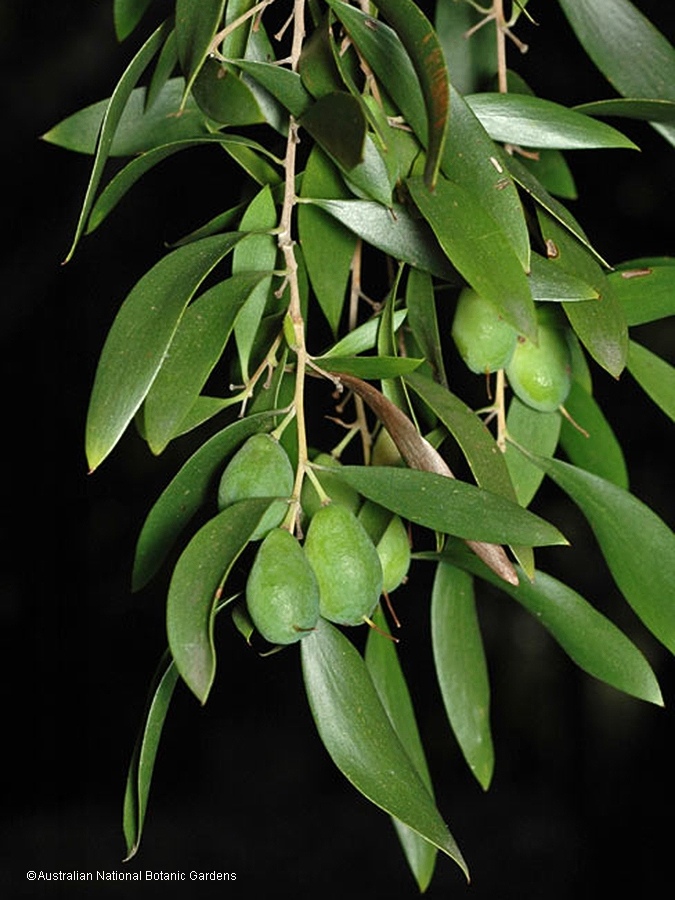Australian Tropical Rainforest Plants - Online edition
Persoonia amaliae Domin.

Erect shrub or small tree to 2-8 m tall. Bark smooth on upper branches, deeply fissured at base, dark brown to black. Young stems moderately to densely hairy with fawn to whitish hairs, stems becoming hairless.
Leaves simple, alternate. Stipules absent. Petiole 2-4 mm long. Leaf blades narrow-elliptic, elliptic, oblanceolate or obovate, 3-8 cm long, 0.6-1.8 cm wide, base attenuate to cuneate often twisted, margin entire or rarely coarsely and irregularly toothed (sometimes recurved or slightly incurved), apex obtuse and apiculate. Lateral veins about 4-6 pairs. Both surfaces similar, sparsely to moderately hairy when young, becoming hairless with age.
Inflorescence terminal or axillary, flowers solitary in axils of leaves or few-flowered in a raceme like arrangement, sometimes axes extending beyond flowers to bear leaves. Flowers bisexual, actinomorphic, 4-merous, 12-14 mm long, up to 12 mm diameter. Pedicels 3-9 mm long. Tepals 4, becoming free to base, sometimes held together at base by papillate hairs on margins, spreading to strongly recurved at anthesis, yellow, sparsely to moderately hairy on outside. Stamens 4, free from each other, filaments c. 3 mm long fused throughout to tepals. Hypogonous glands present, 4; ovary superior, carpel solitary; style straight without a pollen presenter.
Features not available.
Occurs in CEQ, from near Eungella southwards to near to Biggenden in south eastern Queensland. Grows in dry sclerophyll forest and vineforest.
This profile information and associated coding has been adapted from, Harden et al. (2014) and Weston (1995;2007).





